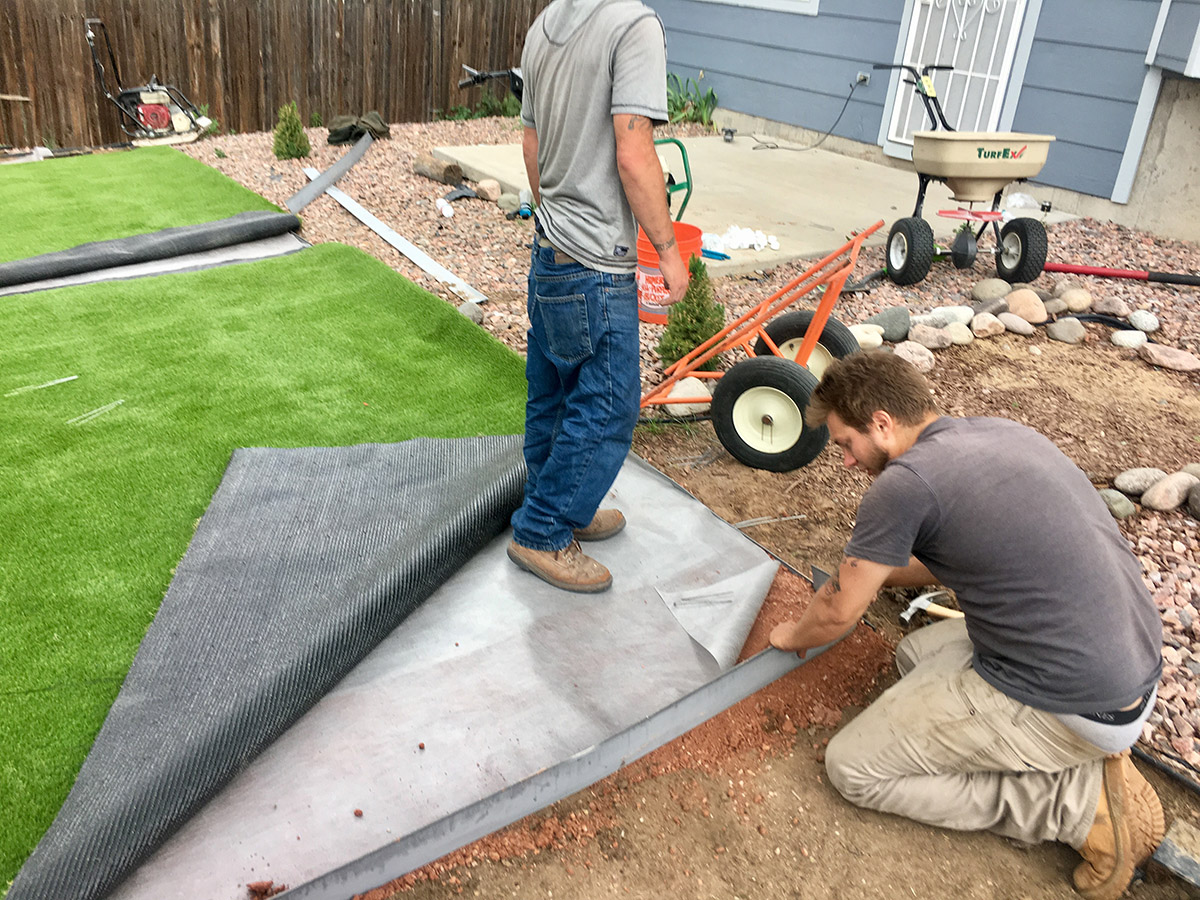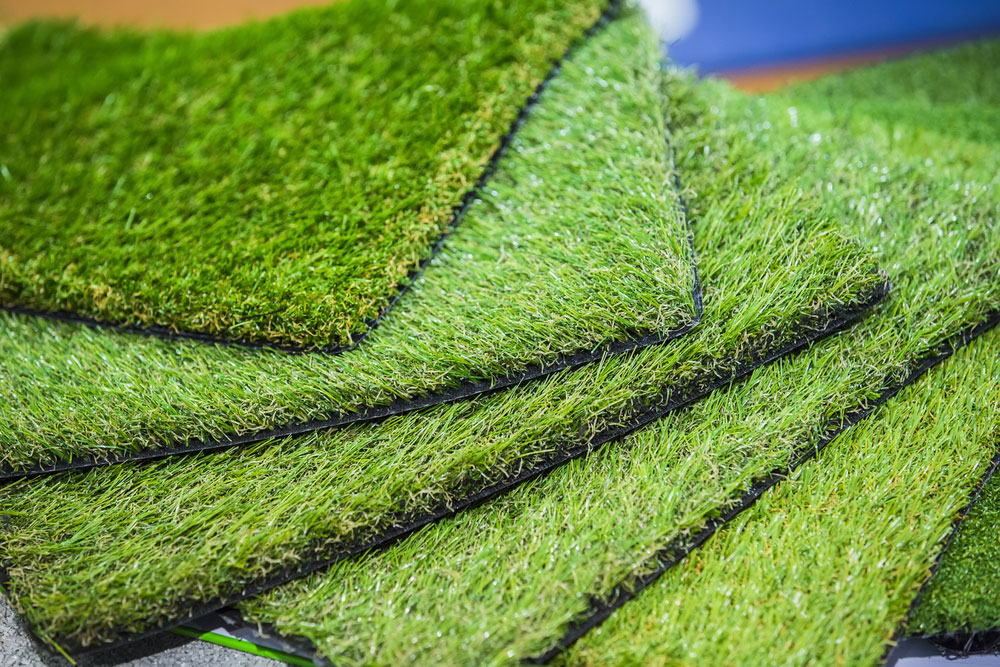Weather-Resistant Arizona Artificial Turf for Home and Commercial Applications
Weather-Resistant Arizona Artificial Turf for Home and Commercial Applications
Blog Article
Delve Into the Environmental Benefits of Opting for Artificial Grass Solutions
The fostering of man-made grass solutions presents a compelling possibility to attend to pushing ecological difficulties. By dramatically minimizing water usage and lessening the application of harmful chemicals, these choices not only promote lasting landscape design but also protect local ecological communities.
Water Preservation Conveniences
One of the most significant benefits of man-made lawn is its capacity to save water. In contrast, man-made lawn does not need watering, considerably decreasing the total demand for water sources.
By eliminating the demand for routine watering, synthetic grass contributes to sustainable landscape techniques and aids reduce the environmental effect of extreme water usage. The preservation of water prolongs to the reduction of drainage, which can lead to soil erosion and river contamination.
In addition, the setup of fabricated lawn permits home owners and communities to allocate water sources extra effectively, focusing on essential uses such as drinking water and farming. The change in the direction of synthetic turf not only advertises liable water usage but additionally aligns with wider environmental objectives focused on preserving natural resources.
As neighborhoods significantly prioritize sustainability, the water preservation advantages of synthetic grass offer an engaging situation for its adoption in residential and industrial landscaping projects.
Reduced Chemical Usage
The shift to synthetic grass substantially reduces the dependence on chemical treatments commonly used in all-natural lawn maintenance. Standard turf management commonly involves the application of fertilizers, chemicals, and herbicides to promote growth and control insects. These chemicals can position threats to human health, regional wild animals, and the environment, adding to dirt and water contamination.
In contrast, synthetic turf removes the demand for these harmful materials. By decreasing the release of artificial substances right into the ecosystem, fabricated turf promotes healthier dirt and water systems.
Moreover, the absence of chemical overflow connected with synthetic grass setups helps secure regional waterways from pollution, supporting marine life and keeping biodiversity. Arizona turf. As communities progressively prioritize sustainable practices, selecting synthetic grass offers a sensible service that lines up with ecological conservation objectives. Through this shift, residential or commercial property owners can delight in lush eco-friendly areas without jeopardizing ecological wellness, leading the way for an extra sustainable future
Reduced Carbon Impact

Moreover, the installation of artificial turf can lead to significant water conservation. Natural grass require considerable quantities of water for irrigation, which not only includes in the carbon impact related to water removal and treatment but likewise stress regional water sources. In comparison, artificial turf requires minimal upkeep, needing no watering, therefore dramatically minimizing water use and its linked power prices.
Additionally, the durability of man-made lawn adds to its lower carbon impact. With a lifespan of up to visit our website 15 years or more, the requirement for regular replacements is lessened, leading to much less waste and lower power intake in manufacturing and disposing of typical turf choices. In general, synthetic grass provides a lasting option for environmentally aware landscape design.
Environment Preservation
Habitat preservation is an important consideration in the dispute over landscape design choices, especially when contrasting man-made lawn to natural lawn. Natural yard lawns usually require extensive upkeep, including using fertilizers, herbicides, and pesticides, which can adversely influence neighborhood communities. These chemicals can seep into the dirt and rivers, hurting native vegetation and animals and interfering with local habitats.
Artificial grass gets rid of the demand for dangerous chemicals, thereby protecting nearby wild animals and maintaining the stability of surrounding ecological communities. The installation of man-made turf can lead to the conversion of previous lawn areas right into more biodiverse landscapes, such as pollinator gardens or indigenous plant locations, which can support neighborhood wildlife.
Eventually, the shift to synthetic grass not only saves water and lowers maintenance efforts however also fosters a much more harmonious connection between human tasks and the natural surroundings, promoting habitat preservation at the same time.
Long-Term Sustainability
Long-lasting sustainability is an important aspect in examining the benefits of synthetic grass over standard yard yards. Among one of the most considerable benefits of synthetic grass is its longevity; it can last up to 15-20 years with marginal maintenance, whereas all-natural lawn requires constant reseeding and substitute. This longevity minimizes the need for constant resources, such as water, plant foods, and pesticides, which are Visit Your URL important for preserving a healthy turf yard.
Furthermore, man-made lawn contributes to a decrease in carbon discharges associated with lawn care tools. Traditional grass often require gas-powered mowers, leaners, and blowers, all of which add to air pollution. Artificial turf companies phoenix. On the other hand, synthetic lawn gets rid of the demand for such devices, advertising a cleaner setting
In addition, the production of synthetic grass significantly makes use of recycled products, improving its sustainability account. As producers take on environmentally friendly techniques, the ecological footprint of artificial turf remains to lessen.

Verdict
The adoption of synthetic grass services offers substantial ecological advantages, including significant water conservation, reduced reliance on damaging chemicals, and a reduced carbon impact. In addition, synthetic grass aids in protecting natural habitats by minimizing land disturbance and advertising long-term sustainability via using long lasting products. Collectively, these aspects highlight the possibility of synthetic grass to contribute positively to ecological health and wellness and provide a viable choice to conventional landscape design techniques in a progressively resource-conscious globe.
In contrast, artificial lawn does not need watering, considerably lowering the total demand for water resources. By lessening the release of synthetic compounds into the ecosystem, artificial lawn promotes healthier dirt and water systems.
Additionally, the installment of artificial turf can result in considerable water preservation. In comparison, man-made lawn needs very little upkeep, requiring no watering, consequently significantly lowering water use and its associated power costs.

Report this page